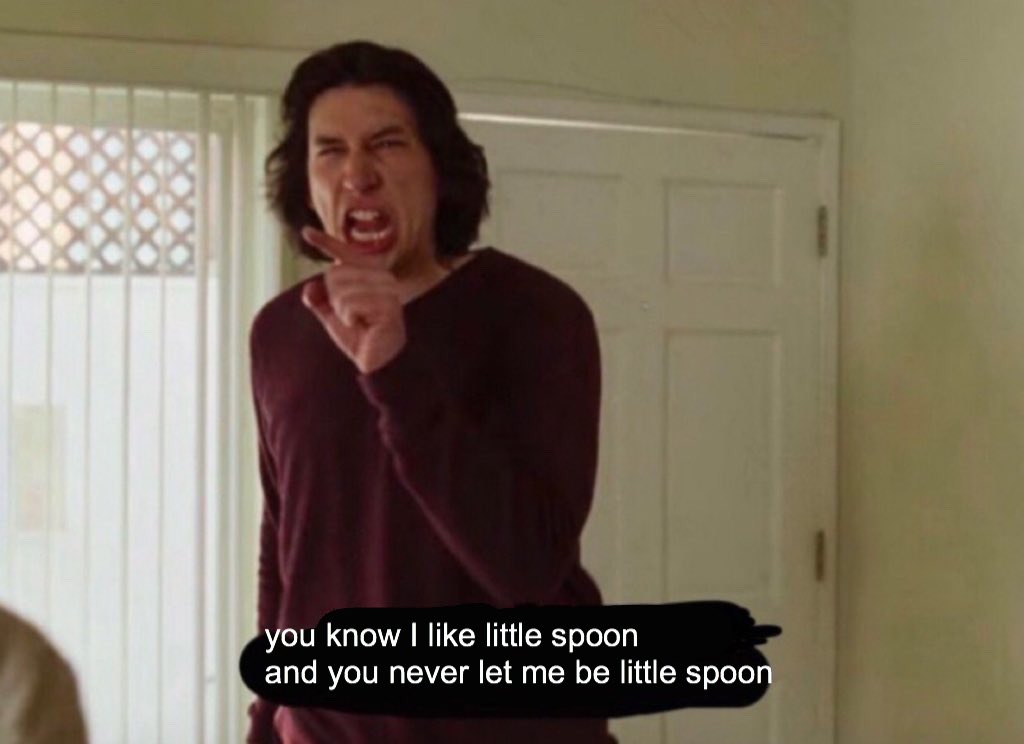How much do vegas show dancers make
FAQ - nightlife - stripper earnings
According to our sources, four-figure nights with millionaire or celebrity customers do occur, but they’re few and far between. On most nights (and/or days), strippers have to grind it out, literally and figuratively, making $20 here, $40 there, and so on. An okay night means $300. A great night, $1,000.
Against the earnings, however, you have to subtract expenses. Strippers don’t work for the gentleman’s clubs, they work at them. Similar to the professional prostitutes at Nevada’s legal brothels, the girls are independent contractors; they rent space at the club by the night. Inflation in the rent figures has been enormous. In the early ‘90s, the girls had to cough up around $15 a night to fill their space. By 1995, it’d gone up to $35 and these days, it’s up around $80-$100.
Also, a stripper has a pretty hefty "uniform" expense -- many like to change their clothes, shoes, and accessories frequently in the never-ending quest to showcase their wares.
Depending on the club, girls are expected to make an appearance on stage every hour or two. The stage is geared for the masses -- plenty to see and plenty cheap. If a dancer makes $50 during her turn on stage, she’s really kicking ass.
Still, smart strippers view their stints on stage as time well-spent for getting noticed and selected for lap dances -- the next rung up the loot ladder.
At an average of $20 for a lap dance and four to 10 lap dances an hour, a girl can make between $80 and $200 an hour if she keeps moving (more often the average is on the low side, since she has to approach at least a few guys before one reaches into his pocket to pay for a dance).
Of course, the more creative a stripper, the more tricks of the trade she can employ to empty a guy’s wallet -- and ATM and credit-card accounts. The drunker the guy the better.
Some strippers prefer guys to be alone: No one to talk sense to them. Others prefer guys in a group: several other potential customers, all egging each other on.
Between the stage and the main floor, strippers can earn a solid $300-$500 a night. But hitting a home run in the stripper business means coaxing customers into the VIP or High-Limit Room. That’s where the big bucks await, for private and (in some cases) anything-goes performances. Per-dance prices usually double or triple in the VIP rooms (or more, depending on the club). Tips also skyrocket.
The $5,000 nights depend on a girl landing a big fish to whom money’s no object, or scamming a guy who’s too plastered or flustered to know what he’s doing. The big-time is when a prosperous guy comes expecting to shell out thousands for a night of female attention or when one hands over his credit card and just keeps signing when a girl tells him to. That’s rare, but it does happen.
In addition, there’s a difference in the cash flow depending on the club. If a stripper is young, beautiful, and lithe, she can work at the top joints, where guys with money to burn hang out. But girls at the smaller and less-classy places are in a very different league financially.
But girls at the smaller and less-classy places are in a very different league financially.
There’s also a differential between topless and all-nude clubs. The latter are almost always dives, which can’t serve liquor (they don’t qualify for liquor licenses). When there’s no chance to ply your customers with booze, it’ll certainly affect tipping levels.
Ultimately, however, no matter what she looks like or where she works, the more creative and intelligent a stripper is, the more she’ll recognize financial opportunities on the job.
How Much Do Dancers Make?
Growing up, someone probably told you, “Do something you love, and you’ll never work a day in your life.” For many young, aspiring dancers, this seems a worthy motto, but even if you think you can eat, sleep, and breathe dance, you do actually need to make money to survive, even as a professional dancer.
On average US-based professional dancers can expect to earn about $24.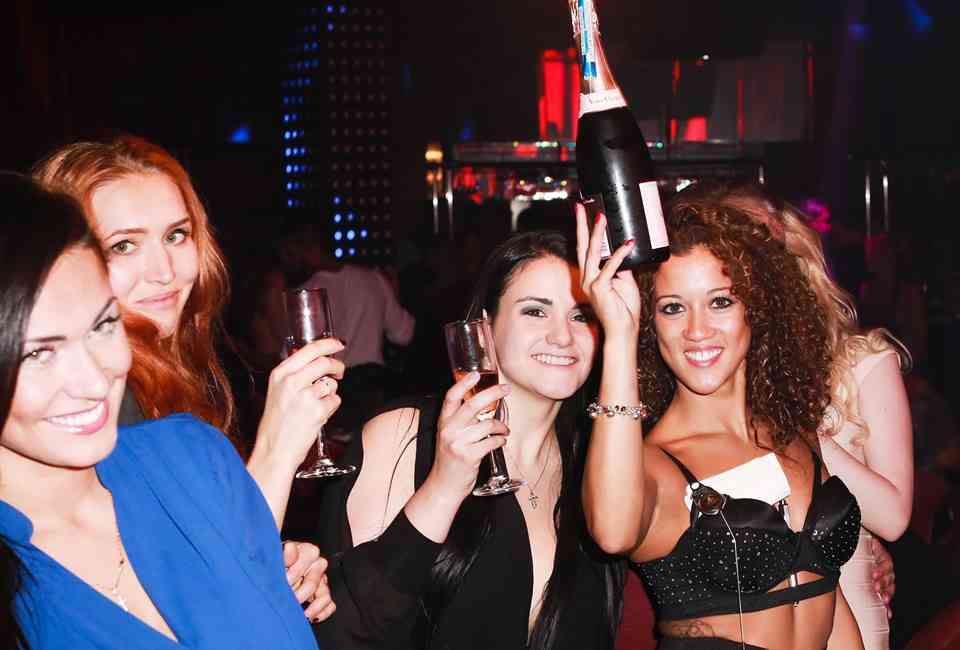 50 an hour. However, this statistic begins to change drastically once you consider different types of dancers, different markets, and different dance careers.
50 an hour. However, this statistic begins to change drastically once you consider different types of dancers, different markets, and different dance careers.
Ultimately, what you can expect to make as a dancer depends on your location, genre, and career path you decide to take within the world of dance. So, before you start budgeting your New York City studio apartment based on a statistic, let us explore how dancers are paid across the industry.
How Much Do Dancers Make?
via GIPHY
How much a professional dancer earns is highly dependent on the market they find themselves in, and there is a lot of pay diversity within the dance industry.
For instance, on one end of the spectrum, the highest-paid performance ballerina in the world, Nina Ananiashvili, earns a whopping $30,000 per performance! On the other end of the spectrum, your local, small-town dance instructor might be lucky to earn $8,000 in annual profits after paying for studio space and recital costs.
Ultimately, a dancer’s income is determined by their career path, genre, and location. Taken together, these three elements form what we’re calling a dancer’s individual “market.”
To illustrate what we mean, take a look at these four different dancer profiles:
- NYC Ballerina: This classically trained ballet dancer works for a dance company in New York City. Their income is salaried, and they can expect to make approximately $13,500 per year.
- High School Dance Teacher: This dance teacher works at a middle school in Charlotte-Mecklenburg County in North Carolina. They are salaried and can expect to make $49,000 a year based on their location and career path.
- LA-Based Backup Dancer: This hip-hop dancer lives and works on a gig-basis in LA, where they can expect to earn $500 per day when filming a music video.
- Disney Cast Dancer: This dancer, based in Orlando, is paid $16.
 05 per hour for performing in Disney World shows.
05 per hour for performing in Disney World shows.
From these profiles, you can get a basic understanding of the variation in dancer’s wages and earnings throughout the industry, but let us dive a little deeper.
Types of Professional Dance Careers vs. Income
As demonstrated above, not all dancers are salaried or even paid hourly; some will be paid per gig. Generally, how a dancer is paid depends on the career path they choose to take.
There are four main career paths for professional dancers; they are:
- Freelance Dancer
- Company Dancer
- Dance Instructor
- Choreographer
Here we will explore each career path in depth in hopes that prospective professional dancers may gain a better sense of what type of dance career suits their needs and financial goals.
Freelance Dancers
via GIPHY
Freelance dancers tend to work on a project basis and will generally have a very diverse career. Some freelancers may take gigs within a single genre, but most successful freelancers dabble in multiple dance genres. As a result, they are continually growing and learning new techniques and styles.
Some freelancers may take gigs within a single genre, but most successful freelancers dabble in multiple dance genres. As a result, they are continually growing and learning new techniques and styles.
What these dancers gain in career diversity, they sacrifice in income stability because they will not be earning money between gigs. As a result, they must constantly be scouting new opportunities.
Some examples of freelance dance gigs include:
- Backup dancing
- Cruise ship casts
- Theme park casts
- Theatre and musical casts
- Movie or commercial appearances
The length of time and the amount a gig pays will depend on the contract you sign for each project. If you land a role in a Broadway musical, for example, that gig will last as long as you stay with the cast and could provide you with long term income. If you work on a music video, on the other hand, your project may only last a week or two.
The vast majority of professional dancers working in the United States fall into this category, which means there are many services in place to help protect freelance dancers.
It is essential to keep in mind that, as a freelance dancer, you will often be expected to commit to a gig before signing a final pay contract. Because of this precarious situation, most freelance dancers will have an agent that has the legal prowess to ensure that clients pay their dancers what they are due.
Freelance dancers have exciting and fulfilling careers, but the insecurity is not for everyone.
Company Dancers
via GIPHY
If performance dance is still your passion, but you are looking for a little more income stability, striving to become a company dancer may be a better career fit for you.
Company dancers will work for the same company for an extended period, hence the name company dancer. These types of dance careers are limited to major urban areas that can sustain a professional dance company.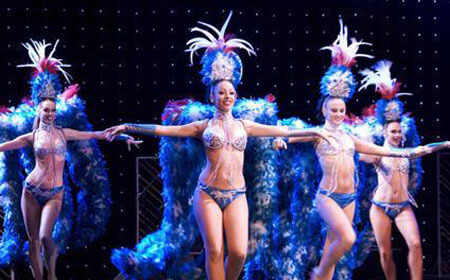
Company dancers are salaried, but their location will determine their income. A company dancer in NYC can generally expect to earn more than a company dancer in a smaller city, like Albuquerque.
Dance companies are also generally focused on one particular genre of dance. The vast majority of dance companies worldwide are ballet or modern dance companies, but there are a growing number of companies specializing in other dance genres, such as:
- Historical Performance: This genre includes genres like folk dance, trad, and other kinds of ethnic dance genres.
- Jazz: Jazz companies are usually further specialized based on the specific evolutionary style of dance within jazz, such as tap or breakdance.
- Circus Dance: This genre encompasses the dance style made famous by Cirque du Soleil, which, we think we can all agree, is very different from ballet.

The genre of company you join, and their reputation, will also factor into the money you make. More popular genres will bring in more company revenue through ticket sales, resulting in higher salaries for the company members. Furthermore, if you can land a spot in a well-known and well-respected company, chances are you will be paid a higher salary.
Company dancers get to earn a living performing with passionate collogues, but the stage is not the only place professional dancers can shine.
Dance Instructors
via GIPHY
If you love to dance, but do not necessarily care for being in the spotlight, perhaps you will find fulfillment in becoming a dance instructor. Teaching dance can be a very meaningful way to earn money doing what you love because you are also given the opportunity to share your passion with others.
School Dance InstructorsDance instructors associated with an established institution, such as a university, college, or school district, are salaried.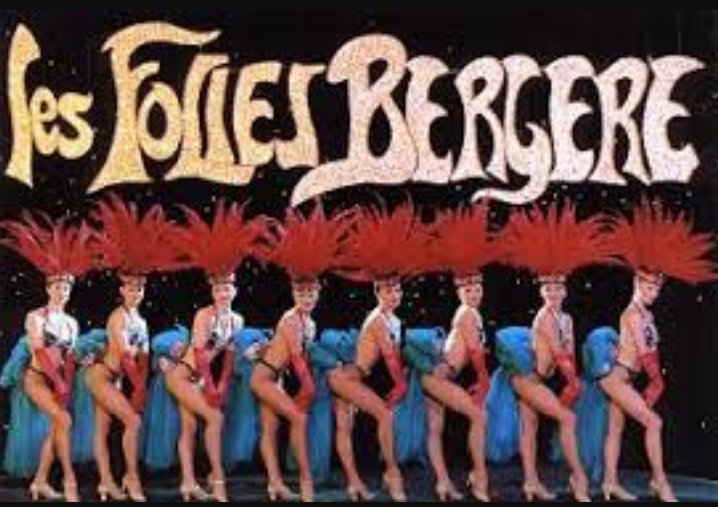 Dance instructors at a studio tend to earn anywhere from $30,000 – $80,000, depending on the location of the studio you work for and the level of education you choose to provide.
Dance instructors at a studio tend to earn anywhere from $30,000 – $80,000, depending on the location of the studio you work for and the level of education you choose to provide.
Note: Suppose you do wish to teach dance for an institution, especially at the collegiate level. In that case, you will likely need to have a formal degree in dance, which will include coursework on dance history and choreography.
Dance School OwnersDance teachers associated with a studio are typically paid hourly based on the number of classes they teach and the dance school or studio's tuition.
If you hope to operate a dance school or studio of your own, you will have to factor the studio space and equipment costs into your income calculations. Based on some available statistics, studio dance teachers/owners can earn anywhere from $8,000 - $325,000, depending on the studio's location, size, and management.
Choreographer
via GIPHY
The final dance career path we will discuss here is a little different from the others. Choreographers are trained dancers who create and direct new dance routines. Dance instructors and studio teachers may do this to some extent within their role. Still, there are also full-time choreographers who help develop dance choreography for everything from music videos to major ballet movements.
Choreographers, like freelance dancers, are usually paid per project. Therefore, a choreographer’s annual income is based on the number of project contracts they take on in a given year and how well those contracts pay.
To give our readers a ballpark idea of what you can expect to make as a choreographer, according to the Bureau of Labor Statistics, the median hourly income of a choreographer is $18.68.
Typically, choreographers start out as dancers, so it might help think of this career path as a possible evolution, but you will likely start out following one of the careers mentioned above paths.
Dance Markets and Prospective Pay
Now that we have discussed the most common dance career paths and what they have to offer, let us dive a little deeper and consider some of the most common dance markets in the United States and what they have offer pay-wise.
Remember, for the purpose of this article, a “market” is the sum total of a dancer’s career path, genre, and location.
Most dancers will either make concrete decisions about their career path and/or genre, allowing the opportunities available within those parameters determine their location. Although, a select few will pick their location first and let the locally available opportunities dictate their career path and genre.
No matter how they end up in their market, once they have found it, it will be easier to estimate what they may earn from their work as professional dancers.
Urban Company Ballerinas
via GIPHY
The New York City Ballet Company is one of the most well-known and prestigious ballet companies in the United States. As such, a position in their corps de ballet is highly coveted among dancers. The audition process for a spot on their roster is intense, allowing them to select the best of the best. But is it the highest-paid company in the US? Not necessarily.
As such, a position in their corps de ballet is highly coveted among dancers. The audition process for a spot on their roster is intense, allowing them to select the best of the best. But is it the highest-paid company in the US? Not necessarily.
Based on data from August 2020, company members of the New York City Ballet can expect to make, on average, $53,000. Whereas, members of the Bay Pointe Ballet company in San Francisco can expect to earn $57,000.
The point is, the highest paid ballet companies are not necessarily those in the biggest cities. Before picking your market location, do some research, and find out which companies bring in the highest revenues and have the most loyal patrons because they will ultimately pay the most.
Considering Income vs. Cost of LivingYou will also want to balance the company dancers' average income in a given location against the cost of living in that area.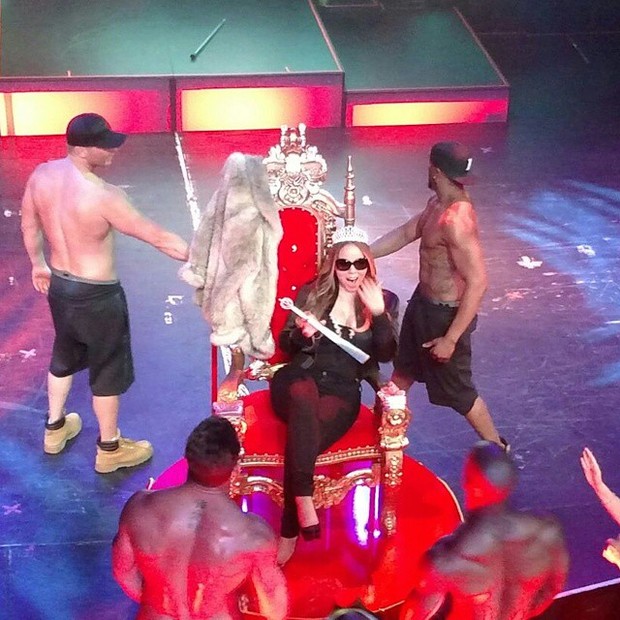 Some “small town” ballet companies offer generous salaries relative to the cost of living in that area.
Some “small town” ballet companies offer generous salaries relative to the cost of living in that area.
For example, based on Dance Magazine's income information, a ballerina in a Tennessee-based company could make up to $54,000 a year, which will undoubtedly go further in Tennessee than it would in New York!
Essentially, if your heart is set upon being a company ballet dancer, we recommend checking multiple locations to see what different companies, in various locations, have to offer you.
Broadway
via GIPHY
If you are more interested in theatre dance, performing in a Broadway show has likely been one of your long-term dreams.
It might be interesting to note that professional Broadway dancers have a union that negotiates minimum wages. This means that, while Broadway dancers do tend to be considered freelance dancers, in the sense that they are only paid as long as they are part of the cast, there is income security for that timeframe.
How much you make as a Broadway dancer will depend on your rank within the dance corps, overtime, and risk. According to union regulations, Broadway dancers' baseline pay is $1,861 per week with additions as follows:
| Reason for Added Income | Premium Paid Above Weekly Baseline |
|---|---|
| Dance Captain | $372.20 per week |
| Assistant Dance Captain | $186.10 per week |
| Overtime | $44 per hour |
| Understudy | $20 per week |
For the most part, the market for Broadway dancers is based in NYC, but there are off-Broadway performances of Broadway productions in other cities.
Income for dancers in off-Broadway productions is also union regulated, so they will be consistent from city to city. That said, off-Broadway dancers are paid based on how much their production profits each week. At the lowest, off-Broadway dancers are paid $566 a week; at the highest, they are paid $1008 per week.
Based on these numbers, if you can consistently be cast in Broadway or off-Broadway productions, you will likely gross a respectable income. After all, the national average is $64,256 per year.
Backup Dancing
via GIPHY
Backup dancers are freelance dancers, plain and simple. And their projects tend to be shorter-term than those of Broadway dancers. So, if we’re honest, a backup dancer’s real full-time job is auditioning.
Location wise, US-based backup dancers will be limited to the entertainment meccas where music videos are filmed, or they will be required to give up location entirely and travel with artists on tour. No matter where a backup dancer performs, they are represented by a union that sets pay standards.
If they stay put and work on music videos, their income is broken up into two categories, rehearsals and shoots, and determined by the length of their day as follows:
| Rehearsal Time Frame | Pay |
|---|---|
| 8-hour day | $250 per day |
| 4-hour day | $175 per day |
| Overtime | $46 per hour |
| Overtime after 12 hours | $65 per hour |
If this pay scale looks great, that’s because it is fair and negotiated by a hard-working union. But keep in mind you may only work a week or two per month, depending on how many gigs you can land.
But keep in mind you may only work a week or two per month, depending on how many gigs you can land.
If a backup dancer is on the road, the same pay scale is used for rehearsal days, and they are paid a flat rate of $500 per show. Besides rehearsal and show payments, touring backup dancers are paid $150 per travel day plus paid travel and hotel accommodations; they are also given $35 per day for food expenses.
If you enjoy traveling, becoming a backup dancer might just be a great way to be paid to see the world!
Show Dancers
via GIPHY
Show dancers are not the same as Broadway dancers; these show dancers can be found gracing the stages of Las Vegas, Theme Parks, or Cruise lines. Show dancers are freelancers who covet seasonal positions and are generally well-trained jazz, tap, or circus dancers. Their market location is dictated by the contracts they sign and can land them anywhere from Vegas to the high seas.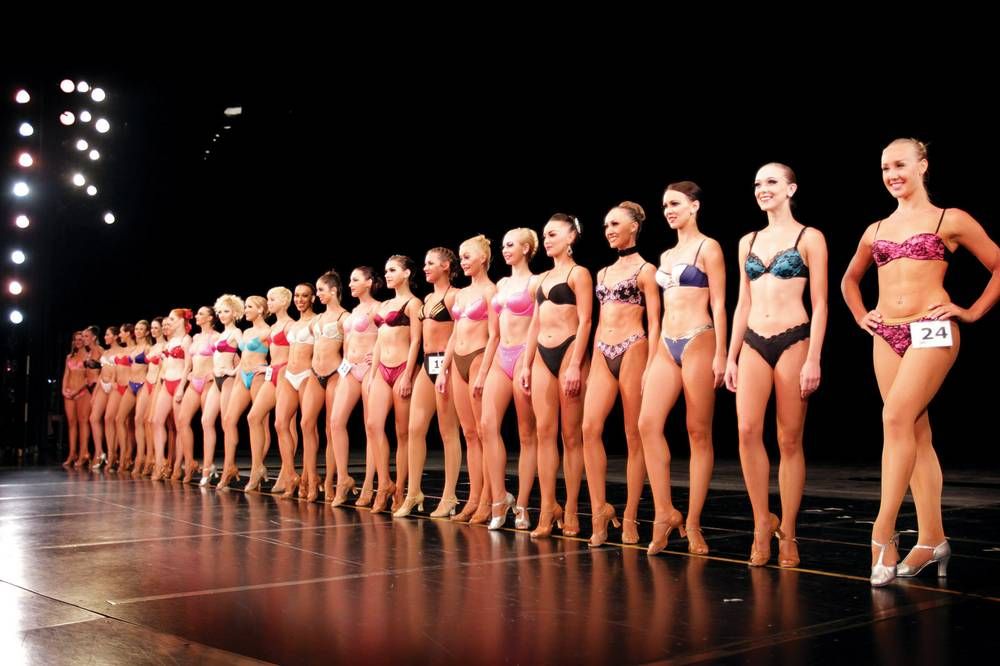
Show dancers are paid on an hourly, weekly, or monthly basis.
- Professional dancers who sign onto a contract in Las Vegas can expect to be paid between $680 and $1,800 per week, depending on which resort or casino they end up at.
- Professional dancers who work at theme parks are generally paid anywhere from $10.50 to $16.05 per hour. Although some theme parks also pay weekly.
- Professional dancers who work on cruise lines are paid, on average, $2,995 per month and are given room and board on the ship.
Show dancers are hard workers, often having to perform multiple shows a day, but this environment does lend itself well to resume building for those breaking into the professional dance world.
Institutional Dance Instructor
via GIPHY
So far, in this section, we have focused on performance-centered markets, but teaching dance is also a good profession in the dance industry. Institutional dance teachers are salaried and make anywhere from $28,000 per year to $124,000 per year. Unlike other dancers, instructors' incomes are based upon their institution's standards, be that a school district or a university.
Institutional dance teachers are salaried and make anywhere from $28,000 per year to $124,000 per year. Unlike other dancers, instructors' incomes are based upon their institution's standards, be that a school district or a university.
Opting to teach dance can be great for dance professionals, young and old. Let’s face it: dance is hard on your body, and most dancers will hit a wall when they can no longer keep up with the physical rigors of performance life. When that day comes, teaching is a great profession to fall back on.
As mentioned above, most schools will require you to have at least a bachelor’s degree in dance and education, as well as a teaching license. Depending on which state you live in, there may be ways to get your education degree and teaching license after you start teaching. However, some universities will require you to have at least a master’s degree in dance.
Once you have those qualifications and secure a teaching position, your income will be stable, and you can stop hustling to endless auditions.
Tips to Maximize Income as a Dancer
via GIPHY
By this point, we hope you are starting to gain a clearer idea of what you might expect to make as a dancer in a given market. Now, let’s talk about ways you can boost your income as a professional dancer, no matter what market you are in.
As dancers, we are inherently creative people, and that creativity does not appear to stop at the end of the stage or studio floor. These tips, collected from other entrepreneurial and creative dancers, are designed to be done in addition to your professional dance career.
- Write about dance: There are tons of dance-themed blogs out there! You can make money writing for blogs, magazines, and newspapers and get paid for it. Ghostwritten blog posts can typically earn you anywhere from $20-$100 extra per article.
- Take side gigs: Even if you aren’t a freelance dancer, there are some tools out there to help connect dancers to one-time dance gigs, like corporate events.
 This one was recommended by a fellow dancer.
This one was recommended by a fellow dancer. - Become a dancewear salesperson: You know you need dance gear anyway; working for a retail dancewear brand can help you earn a few extra bucks and gets you access to employee pricing on expensive things like pointe shoes.
- Become an Amazon affiliate: If retail isn’t your thing, and you want to be your own boss, becoming an affiliate for stores like Amazon could be an option for you. All you have to do is rave about the products that changed your life and get people to buy them using your link.
- Teach private lessons: There is always a need for dance teachers in a local studio, so even if you don’t want to make this your full-time career path, you could consider teaching a class or two per week. Plus, think of all the cute three-year-olds in tutus you might get to hang out with!
- Side hustle: Is there something else you happen to be passionate about? Do you love children, or taking photographs? Anything can be a side hustle in today’s economy, so put yourself out there!
- Make money off your followers: Are you popular on social media? Use that popularity to put money in the bank by monetizing your social media or blog.

- Get a part-time job: Finding a part-time job you can do will help you stabilize your income, especially if you are a freelance dancer. We recommend thinking less along the lines of foodservice and more tele-customer service agent. Do something not on your feet when you can.
The point is, unless you make it as a prima ballerina or become a pop star's most beloved backup dancer, you probably could stand to benefit from finding creative ways to pad your income as a professional dancer.
Consider Joining a Union
via GIPHY
Above we talked about how unions have helped Broadway and backup dancers, but unions are essential for all dancers and are also available to company dancers and even teachers associated with public school.
Unions help dancers get paid fairly and consistently. They also help insure that pay rates keep up with the cost of living inflation and provide union members with access to employment benefits that full-time employers would generally provide.
Other benefits of joining a union include:
- Access to auditions that prioritize union members
- Protections for safe working conditions
- Access to retirement investment programs and pensions
- Payment protection programs
Union membership isn’t required, but joining one does help support the work they do to protect dancers. The mere fact that they exist helps lift up every dancer in the industry regardless of whether they are union members or not.
However, there are a few possible drawbacks to consider:
- Unions generally require the payment of annual dues to get the full benefits of membership.
- Union rules may stop members from taking gigs with non-union companies or clients who have violated the negotiated union terms.
The leading dancer’s unions are the American Guild of Musical Artists, the Actors' Equity Association, and the Screen Actors Guild. You may notice these unions also tend to serve musicians and actors, which helps keep the industry on the same page.
Find a Patron
via GIPHY
Patrons are wealthy people who simply love dance and want to support it in a philanthropic way. Some patrons will give money directly to dance companies or specific dance projects; others will give directly to individual artists.
Bankrolling dancers is a long and proud tradition among members of the upper echelon, dating back to the 1830s when society members would brag about supporting members of the Paris Opera Ballet Company.
Nowadays, to avoid ethical complications, patrons who support individual dancers pay the company “in honor of” a particular dancer. The contribution typically subsidies that dancer’s salary, which is intended to eliminate the occurrences of quid pro quo arrangements that might violate a dancer’s consent.
Most ballet companies will operate their own sponsorship programs to connect dancers to patrons.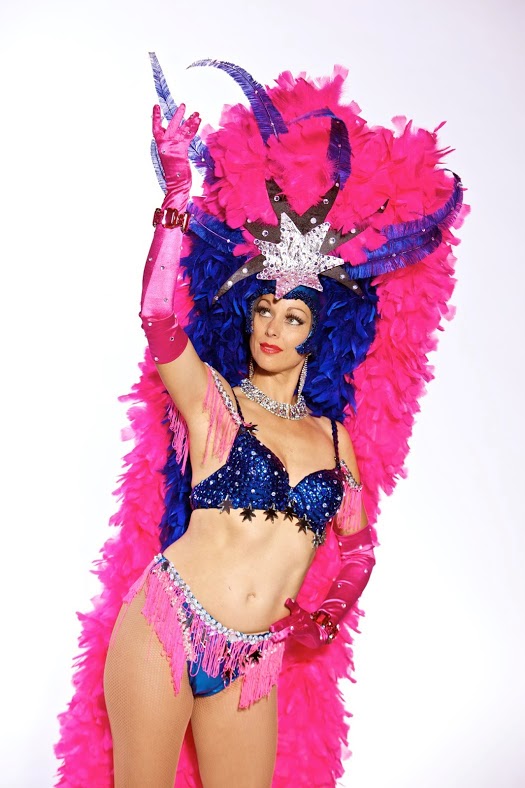 In its current format, patrons more-or-less “adopt” dancers from the local company. One dancer from the Carolina Ballet, Lilyan Vigo Ellis, reported that her sponsors would take her out to dinner after performances and treated her sons like their very own grandchildren. So, finding a patron that you get along well with can go a long way to increasing your salary long term.
In its current format, patrons more-or-less “adopt” dancers from the local company. One dancer from the Carolina Ballet, Lilyan Vigo Ellis, reported that her sponsors would take her out to dinner after performances and treated her sons like their very own grandchildren. So, finding a patron that you get along well with can go a long way to increasing your salary long term.
Final Thoughts
You can make money as a dancer, no matter what anyone tells you. It will take hard work, dedication, out-of-the-box thinking, and perhaps even a little schmoozing, but it can be done, so don’t give up on your dream!
No matter what career path you follow or market you enter, doing what you love for a living is a worthy endeavor. And remember, picking up a side hustle or taking a patron does not detract from all the fact that you will be making your way in the world as a professional dancer, all on your own.
How much do dancers Chip and Dale earn? – Celebrity.
 fm
fm Chippendales Salaries
| Position | Salary |
|---|---|
| Salary of dancers - 3 salaries declared | $31,556 / year |
| Salary of male exotic dancers - reported 1 salary | $94 / hour |
| Marketing salaries - reported 1 salary | $85,126 / year |
| Production tour manager salary - reported 1 salary | $83,399 / year |
• March 13, 2021
So which hotel is Chippendales in?
ABOUT THE CHIPPENDALES VEGAS SHOW
Nearly 17 months since the start of the pandemic, the hottest men in Vegas are back and ready to party, please and tease again when the Chippendales return to turn up the heat in their custom built home. Rio Las Vegas .
With that in mind, how much does a dancer make in Vegas?
As the number of such shows decreases, so does the dancer's salary. According to Simply Hired, as of 2014, the average annual salary for a Las Vegas dancer was $90,016 $39,000.
Also, can guys go to Thunder from underground?
Men often pay attention to their own physique and talents, but in Thunder From Down Under, it's really all about the women; no one is excluded from the show . And unlike other male revues that don't allow men to watch the show, Thunder welcomes them.
Where is the Chippendales show in Vegas?
Chippendales Las Vegas is an amazing party for the god of sex and abs that will make you go crazy... in the best possible way, of course! The guys tear down the house (and throw the rub) onto the stage in their own theater at Rio All Suites Hotel and Casino in Las Vegas .
Second, how long does the Chippendales show last?
The show is a multimedia experience like you've never seen before. It's 75 minutes of energy and fun while the men dance, strip and sing.
Contents
How long is the Thunder Down Under show in Las Vegas?
Australia's Thunder from Down Under is an Australian men's revue that performs in Las Vegas, Nevada and tours around the world. The show is 90 minutes , an interactive performance with a choreographed dance and flashing lights.
The show is 90 minutes , an interactive performance with a choreographed dance and flashing lights.
Who is the highest paid performer in Las Vegas?
As of the end of 2018, the top-grossing Las Vegas residence was Celine Dion's New Day , which ran in Sin City from 2003 to 2007 and grossed $385.1 million.
What's the trick for $20 in Vegas?
The easiest way to get a free upgrade at a hotel in Las Vegas is to use the $20 trick! Place a $20 bill between your ID and credit card and hand it to the front desk attendant at check-in. . Ask them if the hotel has a free room upgrade and see how they get to work!
How much do street performers make in Vegas?
A recent news report stated that some of these street "performers" were earning between $700 and $800 a day stand and take pictures with tourists.
Can you have a drink at Thunder Down Under?
Can I buy drinks at the show? There is a full bar inside the showroom. . You can also purchase special drinks and bottles of champagne prior to the show date either online or by calling us at (702) 701-7778.
. You can also purchase special drinks and bottles of champagne prior to the show date either online or by calling us at (702) 701-7778.
How much do Thunder from Down Under pay?
The average salary for a dancer in Las Vegas, Nevada is $40,642 per year, which is 41% lower than the Australian average. $69,165 per year for this job.
Are men allowed in Chippendales?
Times have changed, and so have our viewers. Chippendales has become a recognized face, and modern men are quite calm about this show. We don't have a gender bias but we admit there aren't many bros at these gigs.
What happens at the men's review?
Revue is a style of live entertainment that combines music, singing, dancing and costumes , everything is presented as a multi-action show. HUNKS the Show combines all of these elements and adds chiseled men and sexy costumes to create the world's most popular touring male revue show.
What do you wear to the Chippendales show?
You will see a combination of people dressed for the club and people dressed in the most comfortable clothes. Shorts and jeans and shirt are totally fine. Chippendales Las Vegas does not have a dress code. With that in mind, don't be afraid to dress up or even wear something fancy or fun.
Does Chippendales get a tip?
Without going into too much detail, may I ask how much does the average Chippendale dancer earn? We receive salary plus tips .
Thunder undresses from underground?
And unlike other male revues that don't allow men to watch the show, they are welcome in Thunder . … From watching men strip down almost to nothing to acting out your wildest fantasy and then jumping into the audience for face-to-face interaction, Thunder From Down Under is both sexy and entertaining.
Who is the richest singer in the world?
Herb Alpert is an American jazz musician best known as the group known as Herb Alpert & the Tijuana Brass. They are also often referred to as Herb Alpert's Tijuana Brass or TJB. Alpert has amassed an impressive $850 million net worth, making him the richest singer in the world.
They are also often referred to as Herb Alpert's Tijuana Brass or TJB. Alpert has amassed an impressive $850 million net worth, making him the richest singer in the world.
How much did JLO pay for Vegas?
Lopez was first reported to have been offered a Las Vegas residency at Planet Hollywood in October 2014 in a deal that was said to be lucrative. $350,000 per night . The residence was officially confirmed in May 2015.
Who has lived in Vegas the longest?
One of the most successful residencies in history belongs to Elvis Presley , who performed 636 consecutive concerts at the International and Las Vegas Hilton hotels from July 1969 to December 1976.
...
Boxscore
| Grade | 1 |
|---|---|
| Actual gross | $385 million |
| Artist | Celine Dion |
| Residence name | New day. .. .. |
| Year(s) | 2003-2007 |
Can I waive resort fees?
While many hotels state that their resort fees are mandatory, this is not always the case. Guests may refrain from paying these additional fees. … If the resort fee was not specified at the time of booking, to ask to be charged because it is dishonest and deceptive business practice.
Are drinks still free in Vegas?
Vegas casinos serve free drinks to all players . You don't have to sit down at a $100 blackjack table; they will bring you cocktails in the slot machines.
Can you walk from Mccarran airport to the runway?
Yes Walkable from the airport to the Las Vegas Strip.
Last updated: 15 days ago - Authors: 16 - Authors: 6 - Links: 44 interviews and posts; 5 Video.
Find out all about your loved one. celebrities in Celebrity Interviews and don't forget to share this post!
celebrities in Celebrity Interviews and don't forget to share this post!
AGT Salary: How Much Do American Talent Judges Earn?
"America's Got Talent" or "AGT" is a competition series on NBC that invites contestants from all over the US and overseas to showcase their skills. Participants can showcase their talent individually or as a group, ranging from dance, magic, music, tricks, ventriloquism and more. They compete for a cash prize and a chance to get a seat on the Las Vegas Strip. While the series changes the lives of those on the show, it has also been a defining feature of the judges' careers over the years.
Talents such as Mel B, Howard Stern, Piers Morgan, David Hasselhoff and Sharon Osbourne graced the judging panel in the past. If you're interested in the salaries of current America's Got Talent judges, we've got you covered!
America's Judge Salary Has Talent
Simon Cowell has been a part of reality TV for decades, making him a household name. Since he is also the creator of Got Talent, one can only imagine how much he earns every year. Likewise, other judges are the cream of the entertainment industry who make millions. They bring years of experience and solid experience to the platform and there is no price to pay for it. Here we have listed the current judges on the show based on how much they earn per season!
Since he is also the creator of Got Talent, one can only imagine how much he earns every year. Likewise, other judges are the cream of the entertainment industry who make millions. They bring years of experience and solid experience to the platform and there is no price to pay for it. Here we have listed the current judges on the show based on how much they earn per season!
4. Howie Mandel - $1.75 million.
View this Instagram postA message shared by Howie Mandel (@howiemandel)
Howie Mandel has been on the show since Season 5, making him the longest serving judge on the show. The TV star wears many hats as he is a famous comedian, actor, producer, director and show host. His net worth is currently estimated at $60 million, but America's Got Talent doesn't seem to have as much of a contribution to the multifaceted man's wealth.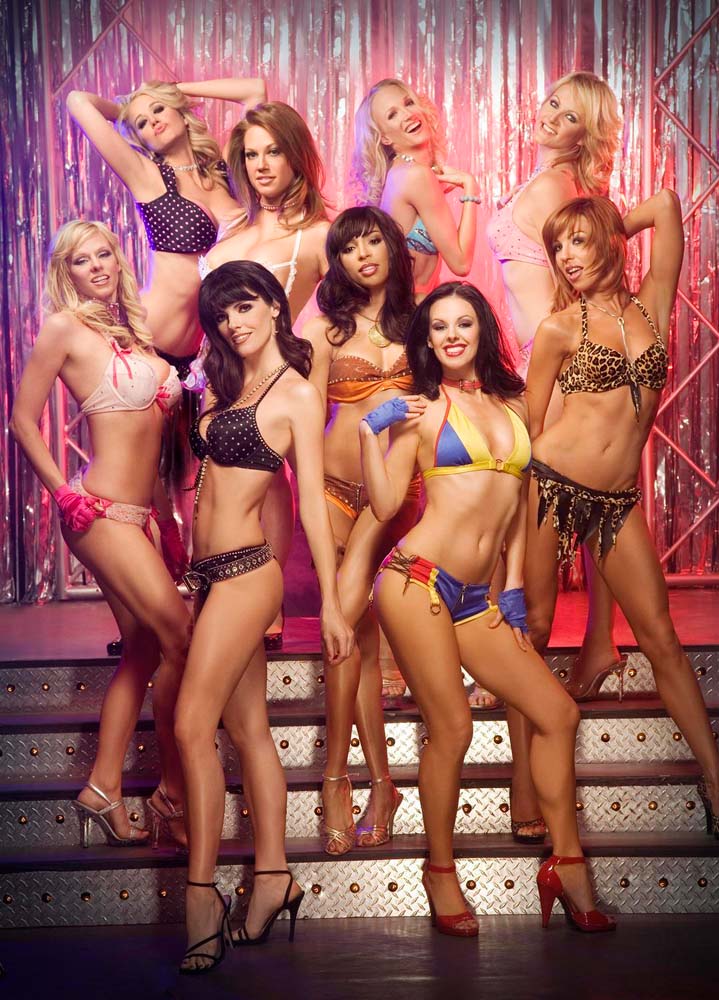
Mandel reportedly earns around $700,000 per episode of the reality series. Bearing in mind that most recent seasons are 23-26 episodes, we estimate that Mandel earns approximately $1.75 million per season.
3. Heidi Klum - $2.5 million.
See this post on InstagramA post posted by Heidi Klum (@heidiklum)
Season 16 is the eighth season (8-13 and 15-16) for Heidi Klum as a judge, who is also a model, TV presenter, producer and business woman. Although the first German model to become a Victoria's Secret Angel is believed to have a net worth of $160 million, she earns around $2.5 million for each season of the American talent show. Klum is reportedly paid $100,000 for one episode of 'America's Got Talent'.
2. Sofia Vergara - $10 million.
View this post on InstagramPosted by Sofia Vergara (@sofiavergara)
The gorgeous Sofia Vergara captured the hearts of the world with her performance as Gloria Delgado-Pritchett in Modern Family. The Colombian-American actress and model has received several nominations for prestigious awards such as the Golden Globe Awards, Primetime Emmy Awards, and the Screen Actors Guild Awards for her performance in a comedy series. Shortly after the ABC show came to an end in April 2020, Vergara served as a judge on the fifteenth season of AGT.
The Colombian-American actress and model has received several nominations for prestigious awards such as the Golden Globe Awards, Primetime Emmy Awards, and the Screen Actors Guild Awards for her performance in a comedy series. Shortly after the ABC show came to an end in April 2020, Vergara served as a judge on the fifteenth season of AGT.
Vergara allegedly made $500,000 per episode on Modern Family, so we believe she also makes a lot of money from AGT. She is one of the most popular judges on the show and is known for her warmth and compassion. She was reported to have been offered at least $10 million per season for the reality series, which is still a significant contributor to her net worth of around $180 million.
1. Simon Cowell - $45 million
View this post on InstagramPosted by Simon Cowell (@simoncowell)
As the creator of the franchise and executive producer of the American talent series, we believe that Simon Cowell earns much more than other judges.





